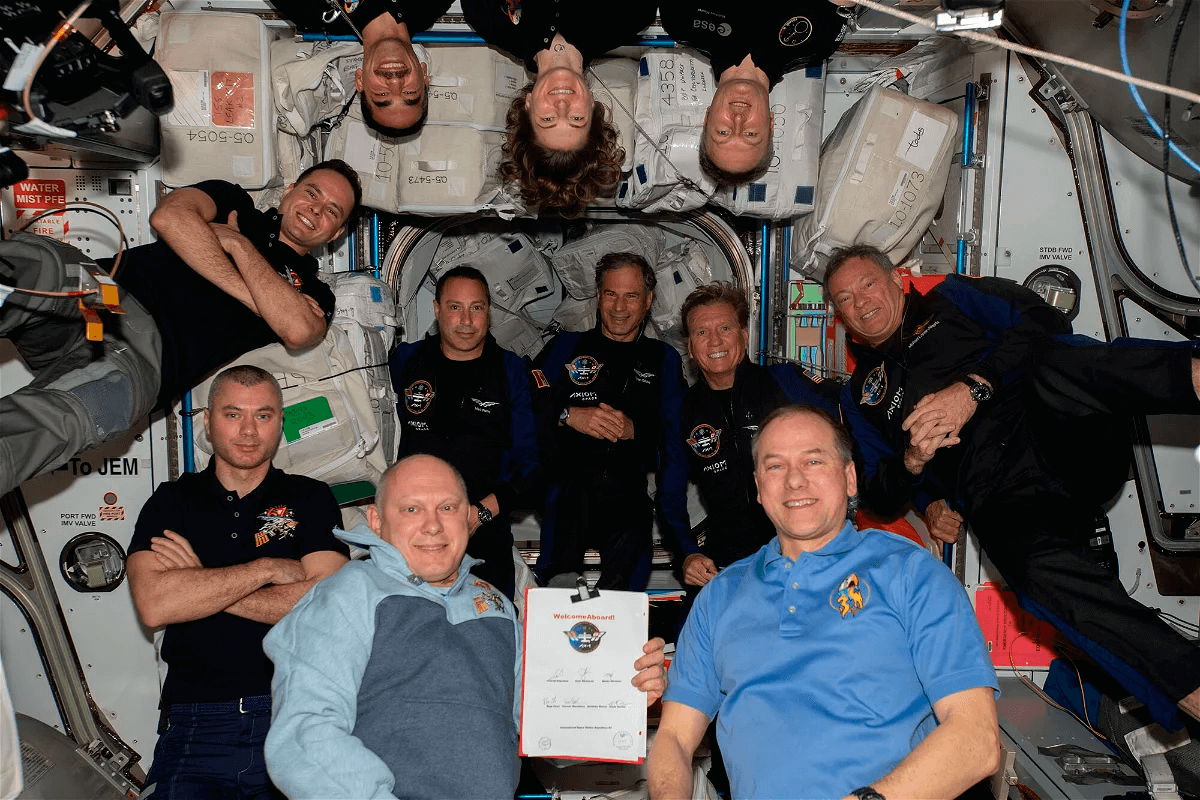
International Space Station Welcomes New Crew
The International Space Station (ISS), a beacon of international cooperation and scientific research, has recently welcomed a new crew aboard. This event marks a continuation of the long-standing tradition of international teams working together in space to advance human knowledge and capabilities in space exploration.
The new crew was launched from the Baikonur Cosmodrome in Kazakhstan using a Soyuz spacecraft. The team includes astronauts from three different space agencies: NASA (United States), Roscosmos (Russia), and JAXA (Japan Aerospace Exploration Agency). The launch was a nighttime event, lighting up the steppe of Kazakhstan with a brilliant ascent into the sky. The Soyuz rocket performed flawlessly, placing the spacecraft into a precise orbit as planned.
- NASA Astronaut: Captain Michael Hopkins, an experienced astronaut who has spent over 166 days in space previously, serving as the mission commander.
- Roscosmos Cosmonaut: Sergey Ryzhikov, this mission marks his second flight into space and he serves as the flight engineer.
- JAXA Astronaut: Norishige Kanai, a first-time space flyer and physician, he brings valuable medical expertise to the crew.
The crew is set to spend approximately six months aboard the ISS, during which they will participate in over 100 different scientific experiments. The experiments are diversified across multiple disciplines:
- Biology: Studying the effects of microgravity on various organisms including humans, which is critical for long-duration space travel.
- Physics: Conducting experiments on fluid dynamics and combustion in space, which cannot be replicated on Earth.
- Astronomy: Utilizing the ISS’s unique vantage point to observe cosmic phenomena and gather data that could redefine our understanding of the universe.
- Technology Testing: Assessing new equipment and technologies that could improve life on the ISS and future missions, including advanced water recycling systems and new communication technologies that could enhance connectivity between Earth and space.
This mission is particularly significant as it includes several landmark projects:
- Inter-Agency Collaboration: Highlighting the collaborative efforts between different countries’ space agencies which symbolize a united approach to exploring the final frontier.
- Health and Safety Research: With an eye toward future missions to Mars, studying the long-term effects of space on the human body is more crucial than ever. The crew will also be testing new exercise regimes and dietary adjustments to better prepare humans for the journey to Mars.
- Technological Advancements: The testing of new technologies designed to make living in space more sustainable. This includes recycling systems that will reduce the need for resupply missions from Earth and communication systems that could aid in future interplanetary missions.
Life on the ISS is structured around a strict schedule of work, exercise, and recreation. The crew members each work an average of 8.5 hours per day on weekdays, which includes both their scientific research and maintenance of the ISS. They exercise for two hours each day to counteract the effects of muscle and bone density loss in microgravity. Additionally, they engage in outreach activities, including live sessions with students around the world to educate and inspire the next generation of scientists and explorers.
The arrival of the new crew at the International Space Station marks the beginning of another exciting chapter in the history of space exploration. Over the next six months, their work will not only contribute to our understanding of space but also test new technologies that could facilitate longer and more sustainable human presence in space. This mission continues to highlight the importance of international cooperation in advancing the frontiers of science and technology.